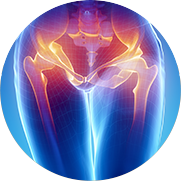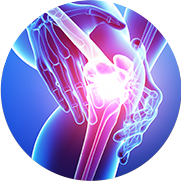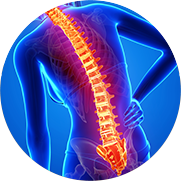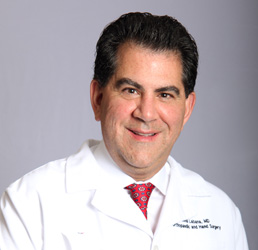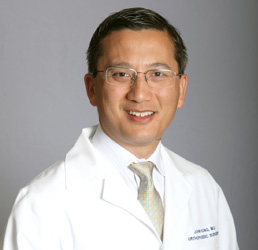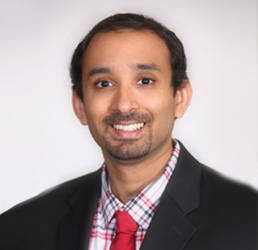The biceps muscle is in the front of your upper arm. It helps you bend your elbow and rotate your arm. It also helps keep your shoulder stable.
Tendons attach muscles to bones. Your biceps tendons attach the biceps muscle to bones in the shoulder and in the elbow. If you tear the biceps tendon at the shoulder, you may lose some strength in your arm and be unable to forcefully turn your arm from palm down to palm up.
Many people can still function with a biceps tendon tear, and only need simple treatments to relieve symptoms. Some people require surgery to repair the torn tendon.
Anatomy
There are two attachments of the biceps tendon at the shoulder joint.
Your shoulder is a ball-and-socket joint made up of three bones: your upper arm bone (humerus), your shoulder blade (scapula), and your collarbone (clavicle).
The head of your upper arm bone fits into a rounded socket in your shoulder blade. This socket is called the glenoid. A combination of muscles and tendons keeps your arm bone centered in your shoulder socket. These tissues are called the rotator cuff. They cover the head of your upper arm bone and attach it to your shoulder blade. The upper end of the biceps muscle has two tendons that attach it to bones in the shoulder. The long head attaches to the top of the shoulder socket (glenoid). The short head attaches to a bump on the shoulder blade called the coracoid process.
Description
Biceps tendon tears can be either partial or complete.
A complete tear of the long head at its attachment point in the glenoid.
Partial tears. Many tears do not completely sever the tendon.
Complete tears. A complete tear will split the tendon into two pieces.
In many cases, torn tendons begin by fraying. As the damage progresses, the tendon can completely tear, sometimes with lifting a heavy object.
The long head of the biceps tendon is more likely to be injured. This is because it is vulnerable as it travels through the shoulder joint to its attachment point in the socket. Fortunately, the biceps has two attachments at the shoulder. The short head of the biceps rarely tears. Because of this second attachment, many people can still use their biceps even after a complete tear of the long head.
When you tear your biceps tendon, you can also damage other parts of your shoulder, such as the rotator cuff tendons.
Cause
There are two main causes of biceps tendon tears: injury and overuse.
Injury
If you fall hard on an outstretched arm or lift something too heavy, you can tear your biceps tendon.
Overuse
Many tears are the result of a wearing down and fraying of the tendon that occurs slowly over time. This naturally occurs as we age. It can be worsened by overuse – repeating the same shoulder motions again and again.
Overuse can cause a range of shoulder problems, including tendonitis, shoulder impingement, and rotator cuff injuries. Having any of these conditions puts more stress on the biceps tendon, making it more likely to weaken or tear.
Risk Factors
Your risk for a tendon tear increases with:
Age. Older people have put more years of wear and tear on their tendons than younger people.
Heavy overhead activities. Too much load during weightlifting is a prime example of this risk, but many jobs require heavy overhead lifting and put excess wear and tear on the tendons.
Shoulder overuse. Repetitive overhead sports – such as swimming or tennis – can cause more tendon wear and tear.
Smoking. Nicotine use can affect nutrition in the tendon.
Corticosteroid medications. Using corticosteroids has been linked to increased muscle and tendon weakness.
Symptoms
- Sudden, sharp pain in the upper arm
- Sometimes an audible pop or snap
- Cramping of the biceps muscle with strenuous use of the arm
- Bruising from the middle of the upper arm down toward the elbow
- Pain or tenderness at the shoulder and the elbow
- Weakness in the shoulder and the elbow
- Difficulty turning the arm palm up or palm down
- Because a torn tendon can no longer keep the biceps muscle tight, a bulge in the upper arm above the elbow (“Popeye Muscle”) may appear, with a dent closer to the shoulder.
Doctor Examination
Medical History and Physical Examination
After discussing your symptoms and medical history, your doctor will examine your shoulder. The diagnosis is often obvious for complete ruptures because of the deformity of the arm muscle (“Popeye Muscle”).
A biceps tendon tear is made more obvious by contracting the muscle (“Popeye Muscle”).
Partial ruptures are less obvious. To diagnose a partial tear, your doctor may ask you to bend your arm and tighten the biceps muscle. Pain when you use your biceps muscle may mean there is a partial tear.
It is also very important that your doctor identify any other shoulder problems when planning your treatment. The biceps can also tear near the elbow, although this is less common. A tear near the elbow will cause a “gap” in the front of the elbow. Your doctor will check your arm for damage to this area.
In addition, rotator cuff injuries, impingement, and tendonitis are some conditions that may accompany a biceps tendon tear. Your doctor may order additional tests to help identify other problems in your shoulder.
Imaging Tests
X-rays. Although X-rays cannot show soft tissues like the biceps tendon, they can be useful in ruling out other problems that can cause shoulder and elbow pain.
Magnetic resonance imaging (MRI). These scans create better images of soft tissues. They can show both partial and complete tears.
Treatment
Nonsurgical Treatment
For many people, pain from a long head of biceps tendon tear resolves over time. Mild arm weakness or arm deformity may not bother some patients, such as older and less active people.
In addition, if you have not damaged a more critical structure, such as the rotator cuff, nonsurgical treatment is a reasonable option. This can include:
Ice. Apply cold packs for 20 minutes at a time, several times a day to keep down swelling. Do not apply ice directly to the skin.
Nonsteroidal anti-inflammatory medications. Drugs like ibuprofen, aspirin, or naproxen reduce pain and swelling.
Rest. Avoid heavy lifting and overhead activities to relieve pain and limit swelling. Your doctor may recommend using a sling for a brief time.
Physical therapy. Flexibility and strengthening exercises will restore movement and strengthen your shoulder.
Surgical Treatment
Surgical treatment for a long head of the biceps tendon tear is rarely needed. However, some patients who require complete recovery of strength, such as athletes or manual laborers, may require surgery. Surgery may also be the right option for those with partial tears whose symptoms are not relieved with nonsurgical treatment.
Procedure. Several new procedures have been developed that repair the tendon with minimal incisions. The goal of the surgery is to re-anchor the torn tendon back to the bone. Your doctor will discuss with you the options that are best for your specific case.
Complications. Complications with this surgery are rare. Re-rupture of the repaired tendon is uncommon.
Rehabilitation. After surgery, your shoulder may be immobilized temporarily with a sling.
Your doctor will soon start you on therapeutic exercises. Flexibility exercises will improve range of motion in your shoulder. Exercises to strengthen your shoulder will gradually be added to your rehabilitation plan.
Be sure to follow your doctor’s treatment plan. Although it is a slow process, your commitment to physical therapy is the most important factor in returning to all the activities you enjoy.
Surgical Outcome. Successful surgery can correct muscle deformity and return your arm’s strength and function to nearly normal.
Last reviewed: May 2009
Co-developed by the American Shoulder and Elbow SurgeonsAAOS does not endorse any treatments, procedures, products, or physicians referenced herein. This information is provided as an educational service and is not intended to serve as medical advice. Anyone seeking specific orthopaedic advice or assistance should consult his or her orthopaedic surgeon.





